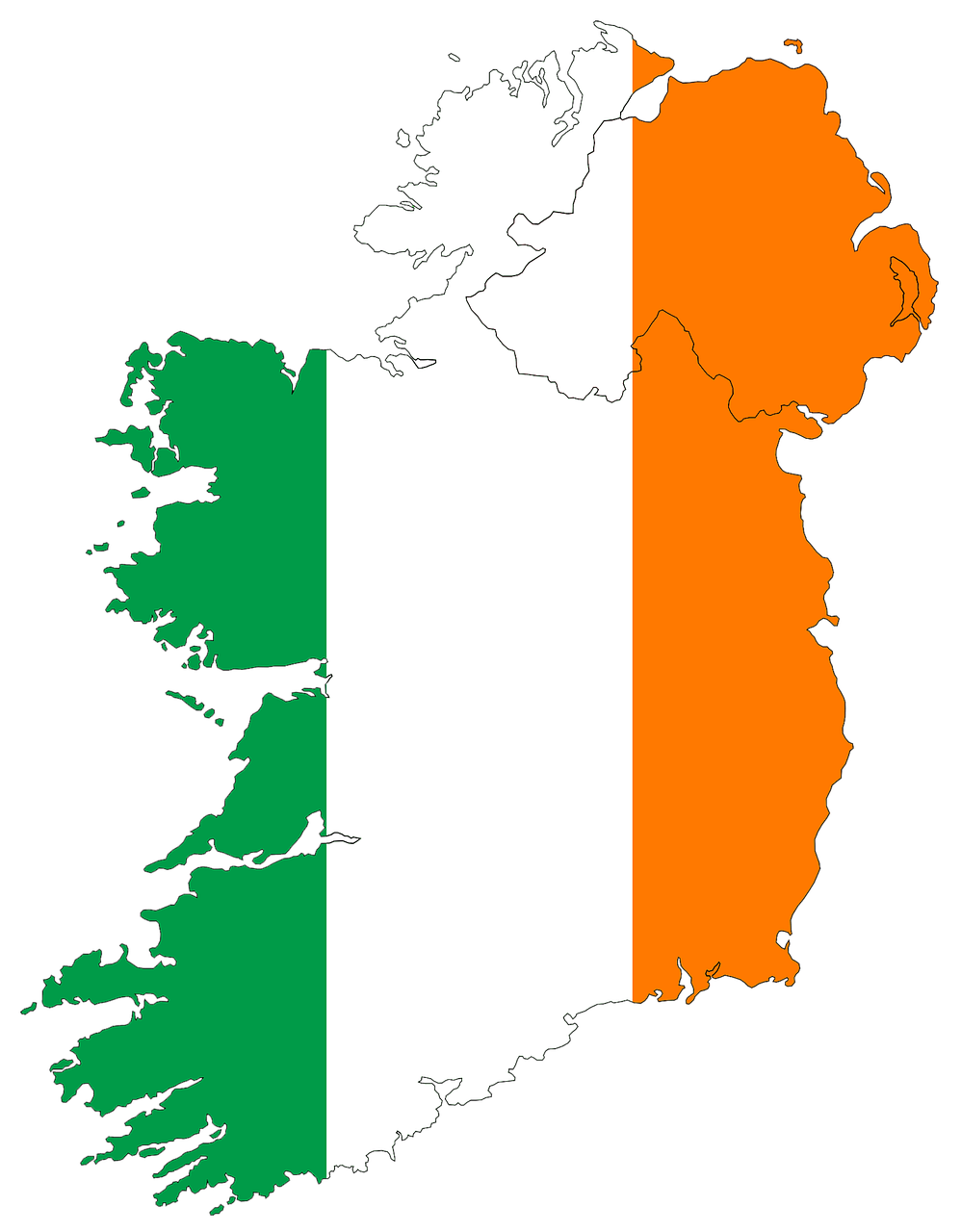This year we commemorate the 100th Anniversary of the death of Canon Sheehan of Doneraile. Following last week’s article, there has been an upsurge in interest in the writings and life of one of Ireland’s most literary geniuses. I received an email from my sister in Canada with informa-tion from a book written by Herman J Heuser DD of Overbrook Seminary. The foreword to his book gives a huge insight into the person and character Canon Sheehan was and makes fascinating reading.
The Story of Patrick Augustine Sheehan is that of a modest country pastor in the south of Ireland who made a great name as a writer of fiction, poetry, and thoughtful essay. Between 1895 and 1910 he had published fifteen volumes. They are: Geoff-rey Austin, The Triumph of Failure, My New Curate, Luke Delmege, The Blindness of Dr. Gray, Glenanaar, Lisheen, Miriam Lucas, The Queens Fillet, Under the Cedars and the Stars, Parerga, The Intellectuals, Cithara Mea (a volume of poems), and Mariae Corona (sermons in honour of Our Lady). Besides these, he wrote a number of essays and criticisms. Another novel, dealing with the Irish uprising in 1867, and bearing the title The Graves at Kilmorna, was published after his death. Some of his books gained at once an international reputation, and were translated into German, French, Italian, Spanish, Dutch, Hungarian, Slav-onic and Russian (Ruthe-nian). These writings not only reveal his special gifts as a thinker and writer, but they allow us to form a fair estimate of his character as a man; of his aims and ideals as a priest and pastor of souls; and they record many actual experiences which gave direction and emphasis to these aims.
Canon Sheehan wrote his novels as a travelled man tells his adventures to young folk. His poetic gift made him clothe the incidents in the vesture of romance, with a moral vista behind the action of his story, to draw the attention of the reader to higher things. Although his figures were mostly copied from the life around him, a certain sense of fitness and a natural delicacy caused him so to modify the form of his character-play as to make it impossible for the general public to point the finger to any individual and say: This is the man. But those who knew the Canon and the relations that shaped his visions or influenced his motives in writing could in many cases trace the sources of his immediate inspirations to definite places and persons. Now that he is dead, and it is possible to compare the varied expressions of his genius, as well as to note the occasions that gave rise to them, there come to the surface spontaneously numerous pieces of evidence to show that he habitually painted from life. An illustration of this may be found in his collection of short stories under the title of The Story of a Spoiled Priest. Almost all the incidents portrayed there are literally true. The author lays the scene of the school, in the first story, “in the County Waterford,” but the description of the place is actually that of Mallow, his native town, as he depicted it elsewhere in almost identical terms. The father of “the spoiled priest” is Patrick Sheehan’s early teacher at the National School; the young curate who discovers Dr. Everhard is Father Sheehan himself; and Kevin O’Donnell who enters a monastery in Florence is a priest whom the Canon befriended to his last hour. Similarly we recognise in the story of “Rita the Street Singer” a barely disguised incident that happened while the author was attached as curate to the cathedral at Queenstown, between 1881 and 1889, although he lays the scene at “Reineville” (an obvious translation of “Queens-town”) and dates it about 1880. In like manner numerous details in the story of Glenanaar present occurrences and scenes taken from the immediate neighbourhood of Doner-aile. It is not necessary to assume that Canon Sheehan, when writing, was always conscious of the fact that he was projecting the likeness of this or that individual. He did not write as a professional man of letters that is to say with artistic attention to definite methods and models. His compositions were wholly spontaneous, and done as a recreation from the fatiguing and, to him, most serious obligations of his pastoral ministry. On this fact opportunity will offer to enlarge, when speaking of his particular gift as a writer; here it suffices to say that his observant mind acted for him as does the sensitised plate of a camera. It mechanically took images and reproduced them. The records thus traced give us not only his itinerary through the broad ways of life but also specific indications of his inner soul action. Beyond this fragmentary and unconscious revelation of his personality by himself the general public has hitherto known little of Canon Sheehan. His mode of life tended toward retirement, and apart from an absorbing devotion to his duties as parish priest, the outside world saw him rarely, and then only as the interpreter of some particular message, such as his office as a preacher or lecturer led him to take up for the time. To the few who were intimate with him we owe the main data of his earlier life. These are chiefly — his younger brother, Denis B. Sheehan, of Queenstown, who kindly read and corrected the MS. of this biography and, as literary executor of the Canon, was able to supplement it with valuable notes and letters. Next I am indebted for information to William O’Brien, M.P., the friend of Father Sheehan’s boyhood, and his associate at school. Likewise to that most lovable of literary Irish priests, the late Father Matthew Russell, S.J., founder in 1873, and editor for more than thirty-five years, of the Irish Monthly to which magazine Father Sheehan was an occasional contributor. When in later years the author of My New Curate of necessity drew attention upon him- self. Father Russell was induced to tell what he knew of him, in a brief article for The Dolphin (1902). Modest as was the account, he had managed to speak of the author in a way which delighted the curious reader, and gave a fair estimate of Father Sheehan’s personality and character as “the most literary of Irish priests since the author of The Prout Papers.”
A second biographical sketch came from the pen of the Rev. Michael Phelan, S.J., of the Limerick community, who also enjoyed the personal friendship of the author. He wrote his impressions while Canon Sheehan was in his last illness and unable to revise them. This fact no doubt accounts for some inaccuracies which I shall have occasion to correct in the course of the biography. At his account of Father Sheehan appeared simultaneously in the Irish Monthly and the Catholic World, and was reprinted by the Catholic Mind. The latter attributes the sketch to the Rev. John J. Horgan, S.J. The fact is the author is an Irish solicitor, whose uncle, as curate of Mallow parish, had young Patrick Sheehan in his church choir. Fr. Horgan himself began his literary career under the influence of Canon Sheehan, and is the author of Great Catholic Laymen and a number of monographs. His close acquaintance with the pastor of Doneraile enabled him to give a true appreciation of the latter; but he does not touch upon the Canon’s domestic or pastoral relations. Beyond such friendly reminiscences, and detached details of the Canon’s career in the Irish and English press on the occasion of his death, there has been no attempt at a complete biography. Apart from these gleanings which put me in the way of fur-ther sources of information, I owe much thoughtful aid in obtaining the requisite material for this sketch to Mother Mary Ita O’Connell of the Presentation Con-vent at Doneraile, whose generous devotion to the interests of education and religion during the years of Canon Sheehan’s pastorate gave her exceptional opportunities of forming an accurate and sympa-thetic judgment of his life among the people of Doneraile. I have likewise to acknowledge the services of Dr. Grattan Flood, who permitted the use of some unpublished MSS. and letters, and other information which made it possible to obtain accurate accounts of the transactions relating to the “Land Settlement” in the district of Doneraile, in which the Canon had taken a leading part as representative of his flock. The Bishop of Cloyne, through his secretary the Rev. William F. Browne, kindly fur-nished me copies of my correspondence with the author of My New Curate covering the period between 1897 and 1910, and other pertinent information. To Lord and Lady Castletown of Doneraile, whose respect and friendship the Canon enjoyed to the close of his life; Colonel Grove White, member of the Cork Historical Society; the Rev. John Burton, P.P., of Donoughmore; Brother P. A. Mulhall, director of the Doneraile Boys’ School; Lady Gilbert (Rosa Mulholland), Miss Agnes Clune Quinlan of Limerick, resident in America; Justice Oliver Wendell Holmes, of the Supreme Court of the United States, and others who, being personally acquainted with the Canon, kindly replied to my inquiries directly or indirectly, I also return thanks. Lastly I wish to express my indebtedness to Mr. Edward Galbally, associate editor and mana-ger of the Ecclesiastical Review, for his aid in completing this biog-raphy by undertaking a journey, amid the trying conditions of the European war, in order to verify certain details of locality and other data connected with the late Canon’s life.





